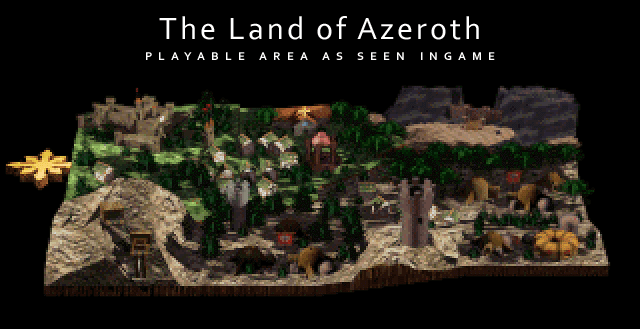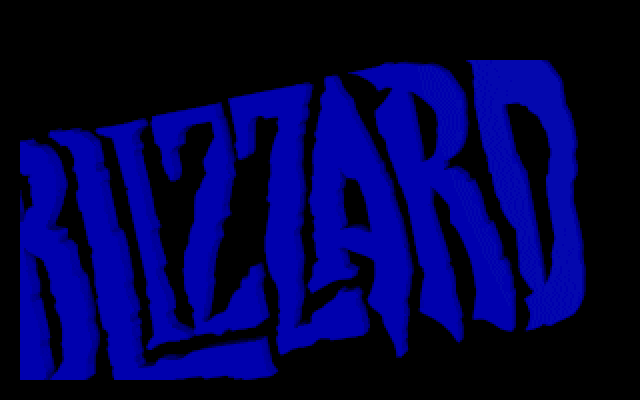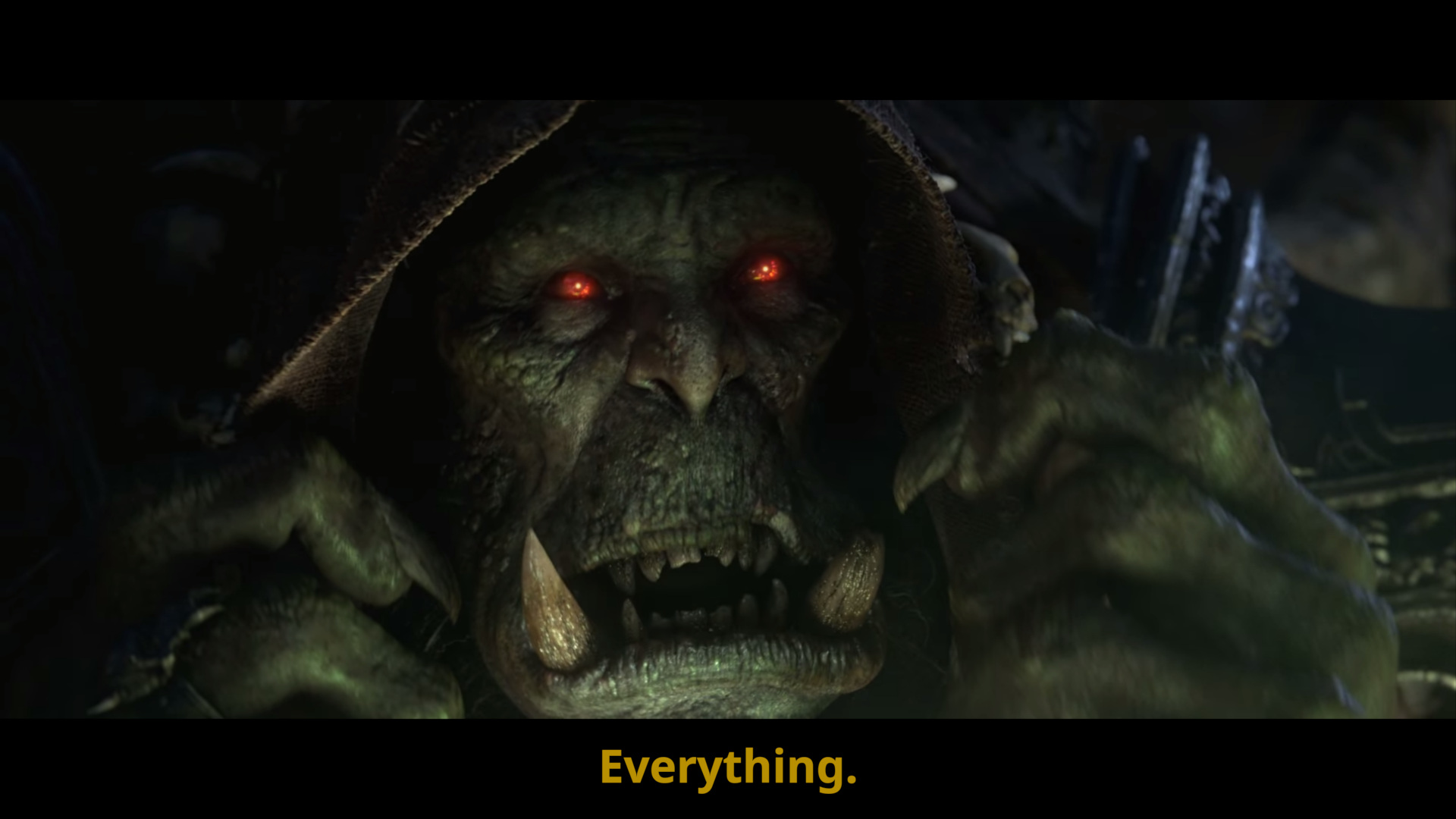Warcraft Retrospective 1: The Evolution of Blizzard

I’m starting this series at a pivotal time.
Tomorrow, BlizzCon 2023 will open, and with it, WoW’s 11.0 expansion will be revealed. There are some unconfirmed leaks, which I won’t reproduce here. The WoW community, and the WoW roleplaying community as part of it, will be watching with anticipation for what might be WoW’s “make it or break it” expansion.
World of Warcraft, and the lore of the Warcraft setting, have been discussed, analyzed and nitpicked to death. Everyone agrees that Shadowlands, the 9.0 expansion, was garbage. Most also agree that the preceding expansion, Battle for Azeroth, was disappointing, through there are disagreements on when and in what exactly it failed. What do I have to say that hasn’t already been said by dozens of streamers and lore delvers on YouTube?
- One part of the answer is that, I think, sometimes it helps to sit down, zoom out, and instead of focusing on only the latest failures and successes of a franchise, examine it as a whole. I grew up with Warcraft games. Though I periodically quit WoW to explore other MMO games, like Guild Wars 2 and Final Fantasy XIV, I always returned to WoW as well in the end. I started with Warcraft 2 in 1996, played Warcraft 3 at release, and was subscribed for every single WoW expansion’s launch. I’ve witnessed much of the franchise’s history and the history of my roleplaying server, Argent Dawn EU. I remember what things felt like back then, and can look at them again from a critical angle.
- Furthermore, most people who review World of Warcraft do it from the position of playing it as a game: raiding, doing PvP, collecting achievements, mounts and transmogs, and so on. Others are more enthusiastic about the story Blizzard is telling in their setting through the expansion storylines. As a roleplayer, I bring a third perspective: that of people who treat the Warcraft setting as a canvas for telling their own stories in it, the way D&D players treat Forgotten Realms, or Eberron, or the dungeon master’s original world.
I’ll go through the Warcraft franchise’s history, drawing on my own experience with playing the installments as they came out, and note what went right, what went wrong, how it felt to me back then, and what lessons we can take now, in hindsight.
My inspiration is the late Shamus Young’s magnum opus, Mass Effect Retrospective. What he did for Mass Effect, I intend to do for Warcraft. Whether you love or hate the Warcraft franchise and setting, I hope you will find something valuable from reading this series. If you think Warcraft is alive, think of this retrospective as me performing a health check; if you believe it’s dead, consider it an autopsy.
But before we start talking about Blizzard games and their storytelling, we need to answer one question…
Which Blizzard?

The Blizzard that released Dragonflight is not the Blizzard that released Wrath of the Lich King, which was, in turn, not the Blizzard behind Warcraft 1 and 2, games that catapulted the company into success.
Personally, I divide the company’s history into four periods.
- The Experimental Era (1991-1996). The Blizzard that released their first original games, Rock n’ Roll Racing and The Lost Vikings, wasn’t even Blizzard yet, but rather Silicon & Synapse. The company was still struggling to find its voice; The Lost Vikings, for example, was a creative platformer with unique mechanics and fourth-wall-breaking humor poking fun at the conventions of the genre. It’s debatable whether Warcraft 1 and 2 are part of this era or the Classic Era, but to me, they contain enough of that early-Blizzard jank that I think of them as a transitional period.
- The Classic Era (1997-2008). This was Blizzard at their finest, their golden age that shaped the franchises we know and love. Diablo, Starcraft, Diablo 2, Warcraft 3, World of Warcraft, and its first two expansions were all created during this period. The name of Blizzard, like Valve, was synonymous with quality; their games took their sweet time to release, but they came out either masterpieces or didn’t come out at all.1
- The Activision Era (2009-2017). This is an uneven era that began with Activision’s acquisition of Blizzard, with the two companies subsequently fusing together more and more. Looking at WoW, we see increasing focus on player convenience and streamlining. Production values during this period were the highest, with large expansion budgets and photorealistic cinematics, but this was the era that started the “good expansion, bad expansion” cycle. The 2010–2012 years came with some of the most embarrassing writing in Blizzard’s history with games like Diablo 3, Starcraft 2, and WoW Cataclysm, whose worst parts and overall tone are, to me, the absolute nadir of Blizzard writing.2
- The Twilight Era (2018–present), or, as some uncharitably call it, “nu-Blizzard”. This era is marked by controversies, growing disillusionment with the company, and growing focus on monetization of franchises at the expense of creative integrity. It began with BlizzCon 2017, with the universal disappointment at Diablo Immortal’s announcement, negative reception of Battle for Azeroth and Shadowlands, failure of Warcraft 3 Reforged due to mismanagement, and the California lawsuit controversy and the resulting WoW Exodus of 2021.
For all the ironic “small indie company” snark on the Blizzard forums, the company is a juggernaut. Its corporate culture, by all indications, changed several times over since its inception. The founding members have since left the company and formed other companies.
This presents a particular problem for writing teams; the Warcraft setting, with its unique feel and flavor that separates it from D&D copycats, was largely Chris Metzen’s brainchild, and even in his time he struggled with translating his vision to others. New writers coming to the WoW team are not going to be as well-versed in behind-the-scenes decisions as those they replace. They might understand lore developments as facts about the fictional universe of Warcraft, but not the reasoning or deeper meaning behind these developments.
Each era had different sensibilities and priorities about both gameplay design and storytelling. And while Blizzard eventually made fans of both old-school and modern WoW gameplay happy3 by releasing WoW Classic, it is only modern WoW that continues the story. Whatever your feelings on the matter, as a roleplayer, if you want to see Azeroth evolve rather than be forever frozen in time, you’re stuck with modern, retail WoW.
What is this for?

Warcraft story and lore discourse has a tendency to focus on a specific expansion or two perceived as bad, and present it as the point where writing quality went down the drain. While I do agree that Battle for Azeroth, and definitely Shadowlands, were the points where most of the lore-oriented fans lost trust in the storyteller, I think they’re symptoms of larger and far older problems with Blizzard’s worldbuilding.
The main points I’m going to make throughout this series are:
- Battle for Azeroth and Shadowlands were the point when long-standing problems with the story culminated, not when they began.
We often look nostalgically at media we grew up with, and are more forgiving of their flaws than of contemporary media, because we didn’t know better. But if we look at all the commonly-cited problems with their writing – retcons, character favoritism, inconsistent motivations, multiple expansion stories being stuffed together into a single expansion – we will find them all present, to some extent, in previous Warcraft games, even the “good” ones. The cracks in Warcraft’s foundations appeared as early as at least Cataclysm, spreading and warping the setting until it collapsed on itself.
- Themes matter. Consistency in themes is more important than consistency in raw facts.
What is your setting and your story about? How should it feel to experience this story, as opposed to the dry facts of what happens? You can plan ahead, or you can write on the fly what makes sense for the characters to do based on who they are, or you can combine the two approaches; different things work for different writers. But tone and themes are paramount. Tolkien didn’t have a rigid plan when writing The Lord of the Rings, many scenes in it came from spur-of-the-moment ideas, and the Middle-earth setting is full of lore inconsistencies and even has retcons4, – but it’s nonetheless an enjoyable read because he knew what kind of story he was writing (and, of course, how it would end, even if he didn’t have the path to that ending mapped out in advance).
- The perceived problems behind Warcraft storytelling are not the fault of any single person, but are the consequence of lack of communication between different writers and lack of a single consistent vision.
WoW players have a tendency to focus on a specific person – usually the most visible writer on the team – and blame them for any and all lore developments not to their liking. It used to be Chris Metzen back in the times of Cataclysm, with roleplayers wishing him gone. Now it’s often Steve Danuser who gets blamed for everything, whereas Metzen’s era is seen nostalgically as a kind of golden age. Alex Afrasiabi is sometimes awkwardly wedged in-between. But this is, as we will see, an oversimplification.
- Warcraft, by now, means wildly different things to different people, and the writing team is put in the unenviable position of trying not to step on too many toes.
Every expansion, like clockwork, we’re hearing the same arguments. They go along lines like this:
Alice: But it’s WARcraft! The Horde/Alliance conflict is central to the franchise’s identity!
Bob: The Horde/Alliance conflict has been done to death. If they start warring again, it means nobody has learned any lessons from previous games. What we need is an epic showdown of both factions against a compelling villain.
Charlie: You’re both wrong. All the constant world-wrecking wars have made everybody numb. What we need is new lands to explore, good worldbuilding and small-scale stories with emotional payoff.
Each of these people probably has favorite and unfavorite Warcraft games or expansions. And the problem with having a favorite expansion is that if it clicks with you, you don’t particularly mind the inevitable bending of the world that is needed for that expansion’s story to happen. But if you don’t like an expansion, then the compromises made by the writers to tell its story cause you nothing but annoyance, and you start picking it apart at every possible opportunity. And if you’re feeling particularly spiteful, you might be genuinely puzzled how someone can actually like that garbage expansion, and start calling its fans names.
We’re not nearly ready to talk about the identity of Warcraft, and what it means for a story to “feel like Warcraft”. First, we’ll need to lay a foundation, tracing the evolution of the franchise from its humble roots.
But what will we be reviewing?
In the words of a certain orc warlock:

At the very least, every officially released Warcraft PC game. That means all three RTS games, all WoW expansions, and Hearthstone. The now-non-canonical RPG books as well, because of its lasting influence on the RP community. And the Chronicle books, as an example of lore books that do their job right. This also means that it will take quite a while for us to get to current story content (Dragonflight 10.1.7, and soon 10.2, at the time of this writing).
As for the novels and comics, I’ll try to cover them on a best-effort basis. I can’t promise to read into every novel, and going through them in detail would make this series, already promising to be very long, much longer. At the very least, I’ll go through the main plot points and note how they align with game lore.
Prepare for a long ride.
-
May you rest in peace, Starcraft: Ghost. ↩
-
And with Shadowlands out there, that’s saying something. ↩
-
Somewhat. ↩
-
For example, the story of Bilbo finding the Ring changed for the darker between the first edition of The Hobbit and The Lord of the Rings, and was then retroactively rewritten in later editions of The Hobbit, to fit the darker tone and more mature story that Tolkien had in mind for the sequel. ↩
Leave a Comment